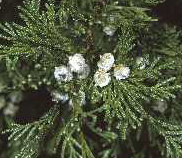 |
On-line Proceedings of the
2009 Atlantic White-Cedar Symposium
The Ecology and Management of
Atlantic White-Cedar (Chamaecyparis thyoides) Ecosystems
A Symposium held on June 9, 10, and 11, 2009 at the
City Hotel and Bistro in Greenville, North Carolina - USA |
Implications of the Data from Long-Term Research on Atlantic White-Cedar Restoration Sites in New Jersey
George Zimmermann, Caroline DiGiovanni and Stephen Mason, Richard Stockton College of New Jersey
Presented by George Zimmermann
In 1989/90 a series of long-term experiments were started in central and southern New Jersey to study the effects of various treatments to restore Atlantic white-cedar (Chamaecyparis thyoides) and quantify impacts of deer browsing , control of competing vegetation, logging slash loads, and use of various types of propagules of white-cedar. Four of the original seven sites have continued to be studied after the first five years, with the first full remeasurements of permanent plots since 2000 done this past summer of 2008.
The effect of deer is complex. For instance, there are now more plant species usually found in the treatments with less protection from deer than the most effective deer-excluding treatments (woven and electric fences). The greater horizontal spatial heterogeneity on a number of treatments from deer browsing is producing a wider variety of habitats for more plant species than where cedars are the densest. Also the 'most successful' treatments (electric or woven fence) are in a stand exclusion phase and understory diversity is lower there now due to shading and probably underground competition. These fenced treatment sites had however, the highest cedar height growth reaching into the over 7 meter height class (i.e. Penn Swamp site: 8833 to 10500 stems per hectare over 7m in height depending on the slash treatment). Wildfire partially burned the Bass River site in 2000, and the Stafford Forge site in 2007 giving additional insights into allogenic forces not planned in the original study.
- Slides (will open in new window)
- Notes (will open in new window)
Proceedings Table of Contents and Conference Links
